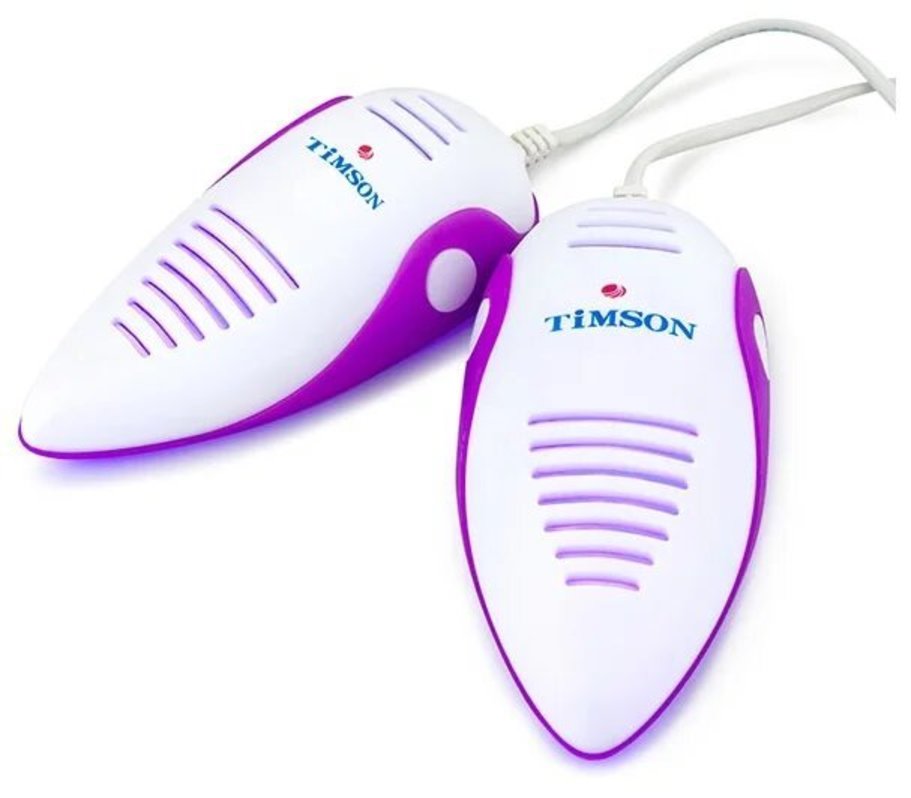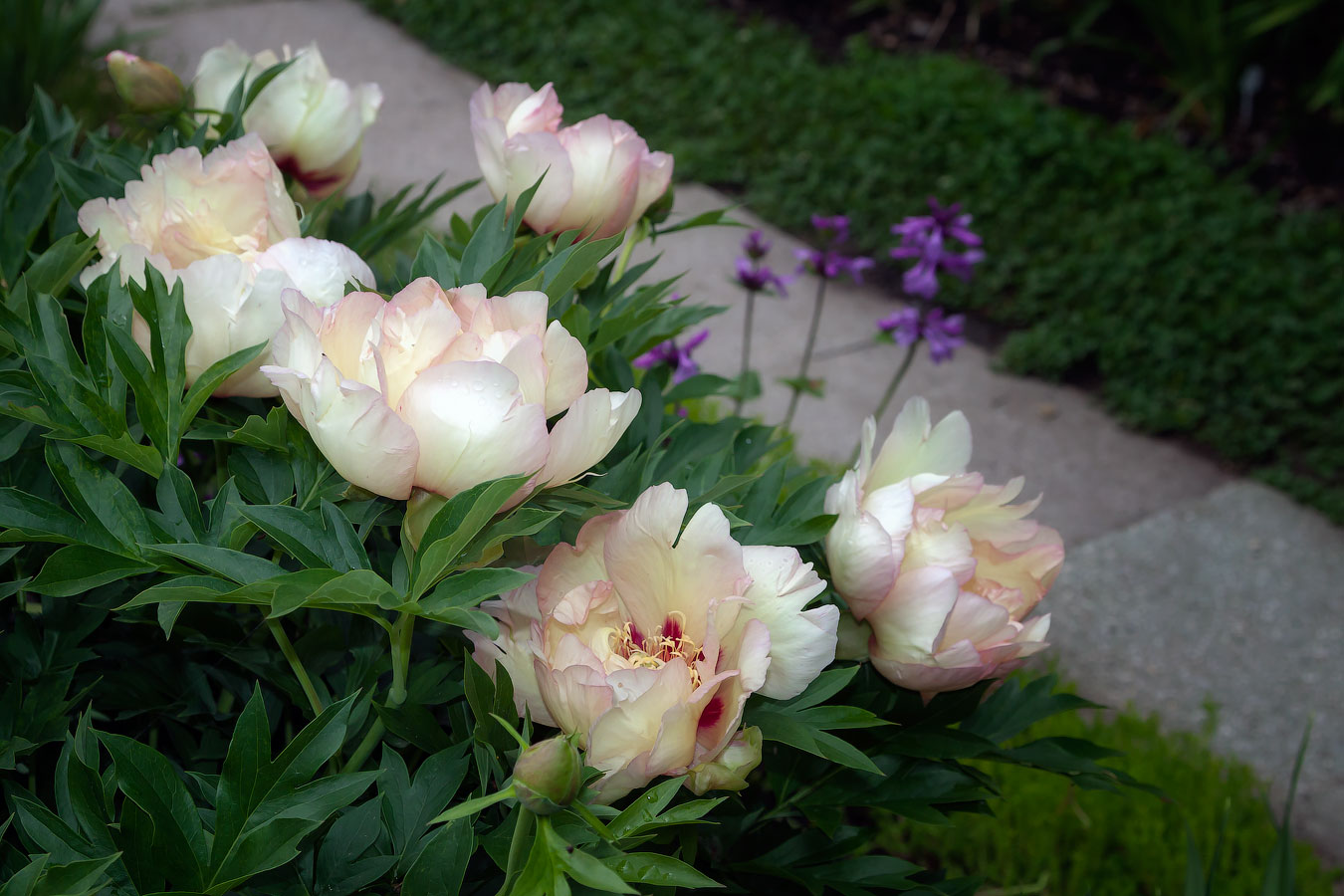Ranking of the best popcorn corn for 2022

Everyone loves corn products. It is used for cooking, in the form of flakes, for popcorn. Many grow it in the garden. The plant belongs to the grass family. It was used before wheat.
Corn has male flowers in the form of panicles and female inflorescences - cobs. The seeds of the plant are large, usually round or cubic in shape. The color is mostly bright yellow, but there are red, blue and even black shades. In our country, it is grown in Siberia, Kursk, Belgorod, Voronezh and Krasnodar regions. We will talk about the best corn for popcorn below.
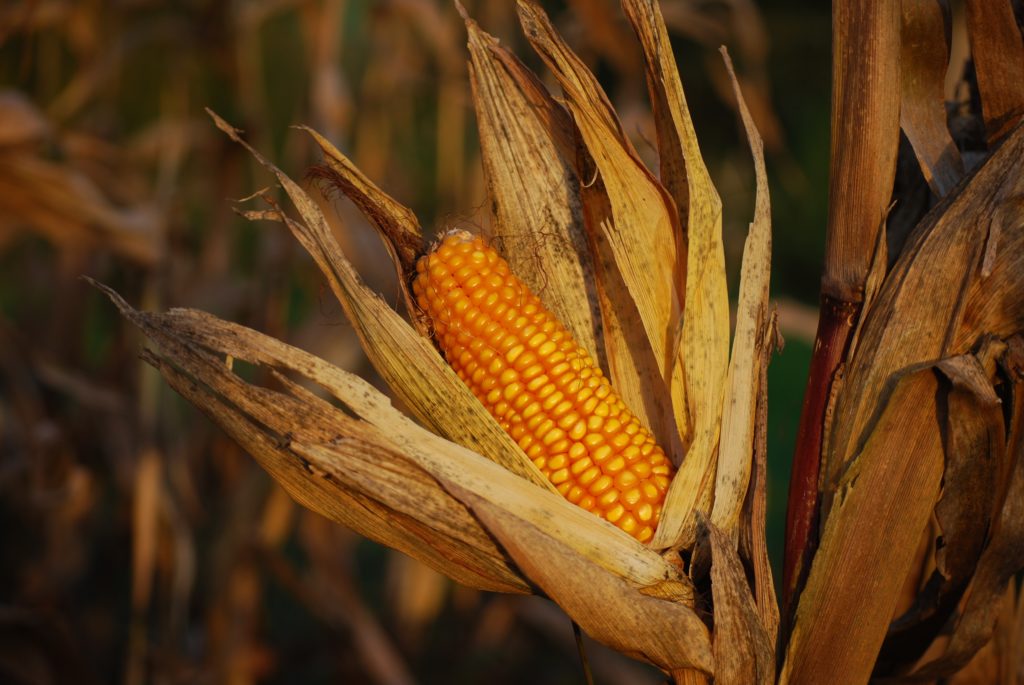
Content
Sweet corn
A crop called maize has been cultivated in Central America for many years. From there, the Spanish conquerors brought cobs with golden grains. In Russia, the plant appeared after the war with Turkey. It was considered a type of wheat. The plant is unpretentious and very nutritious. No wonder she is called the "queen of the fields." Its value lies in its culinary and medicinal value. Sweet corn is the most popular type of crop. Its difference is a large amount of sugary substances.
Each variety has its own characteristics, but in general, all have the same properties:
- reach a height of 1500-4000 m;
- the root system is powerful;
- leaves are large and long;
- thermophilic plant.
The culture is rich in vitamins: groups B, E, C, minerals, protein and fat compounds. It is used in cooking, medicine and cosmetology. Flour, butter and cereals are obtained from grains. The most common types of plants are siliceous, bursting, sugar, dentate and starchy. There are also hybrid varieties of cereal.
Corn for popcorn
Varieties of popping corn have special requirements compared to other types. Their shell is thin and, as it were, varnished. This makes it possible for the grains to crack after heating. They contain little starch, a lot of fat and protein, unlike sweet corn grains.
They have excellent taste and airiness. During the heating process, the water from the grains evaporates and becomes steam. It comes out of the shell of the grain and provokes a loud popping.At the same time, moisture is evenly distributed, and softens the grain.
How it grows
The culture grows only on fertile land and does not tolerate weeds. It will not thrive in sandy soils. Likes regular watering.
The plant grows well after tomatoes, potatoes, gourds. Watering is necessary 1-2 times a week. But strong waterlogging does not benefit the culture. The amount of watering depends on the weather.
Harvested only after the grains become hard. Corn is grown separately from other varieties so that cross-pollination does not reduce the sweetness of the grains.
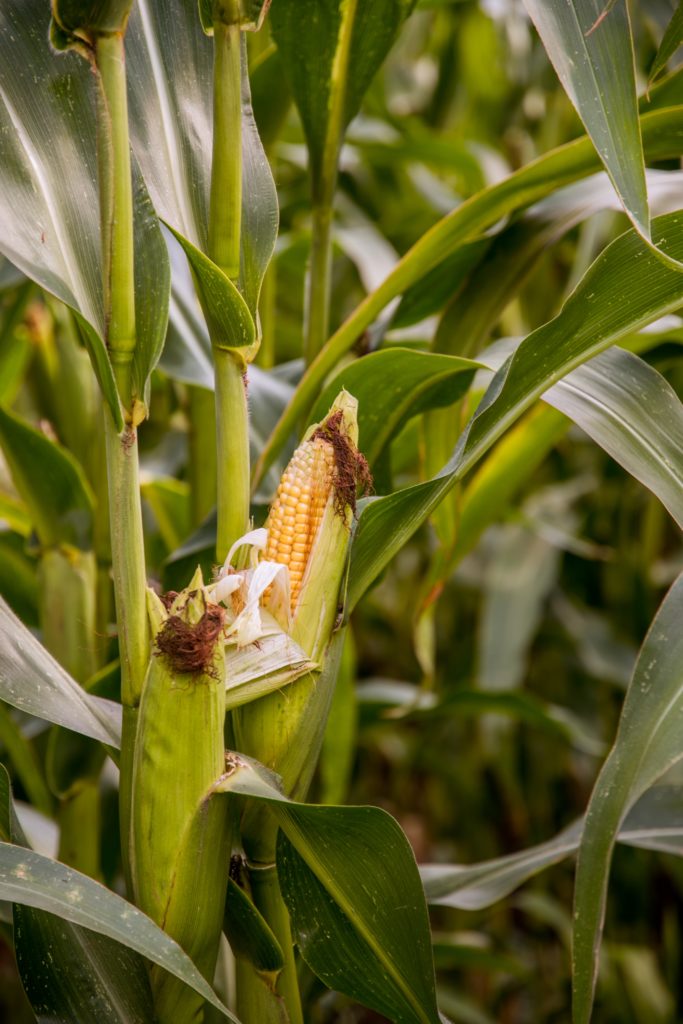
How to plant
First, the seeds are soaked in water and the Kornevin growth stimulator is added. Then the grains are placed in a damp cloth for 3 days. When the seeds hatch, they are sown in moist soil to a depth of 4 cm. The soil should warm up to 10 ° C.
It is necessary to fight weeds, especially when sprouts just appear. It is advisable to mulch the ground with sawdust or mowed grass. If this is not possible, then you need to carefully loosen the soil. This must be done carefully so as not to damage the side shoots.
Corn is quite a heat-loving plant. It does not grow well if the air temperature is below 12°C. In the middle lane, seedlings of early ripening varieties are grown.
It is necessary to plant a plant on the south or south-west side of the house. Often gardeners place it along the fences or next to the terrace. If desired, it can be used as a landscape design. It is easy to make a hedge out of corn.
It is useful to fertilize the culture every 2 weeks with potassium humate or complex fertilizer. It is not advisable to sow it after millet. Since both plants have similar diseases and pests.
Landing pattern
It is advisable to leave a distance of 30 cm between plants when planting, and 70 cm between rows.But it is important to know that corn is cross-pollinated. It is better to plant it not in a row, but in a square.
Stepsons begin to develop after the 6–8 leaf phase. They need to be cut out. Strong sprouts are left, small and weak ones are removed. The plant tolerates a slight thickening better than a rare planting.
Flowering and fruiting
When 4-6 leaves of the plant begin to form, an inflorescence is formed - a panicle. It goes through several stages of development.
Heading, panicle extends 2 cm from the bell of the upper leaves. After that, after 4 days, flowering begins. It continues for about a week.
When the corn blooms, shake it. Then the pollen from the male flower will fall on the female. By this time, the formation of the ear is completed.
Then comes the flowering phase of the cob. It is determined by the exit from the leaves of the cob wrap in the form of silky threads.
Then comes the grain formation phase. Its filling is characterized by the accumulation of plastic substances. There are phases of milky and waxy ripeness. The grain accumulates a large amount of dry matter. The grain begins to harden. With a decrease in humidity by 20%, the cob enters the stage of full maturity.
Harvesting
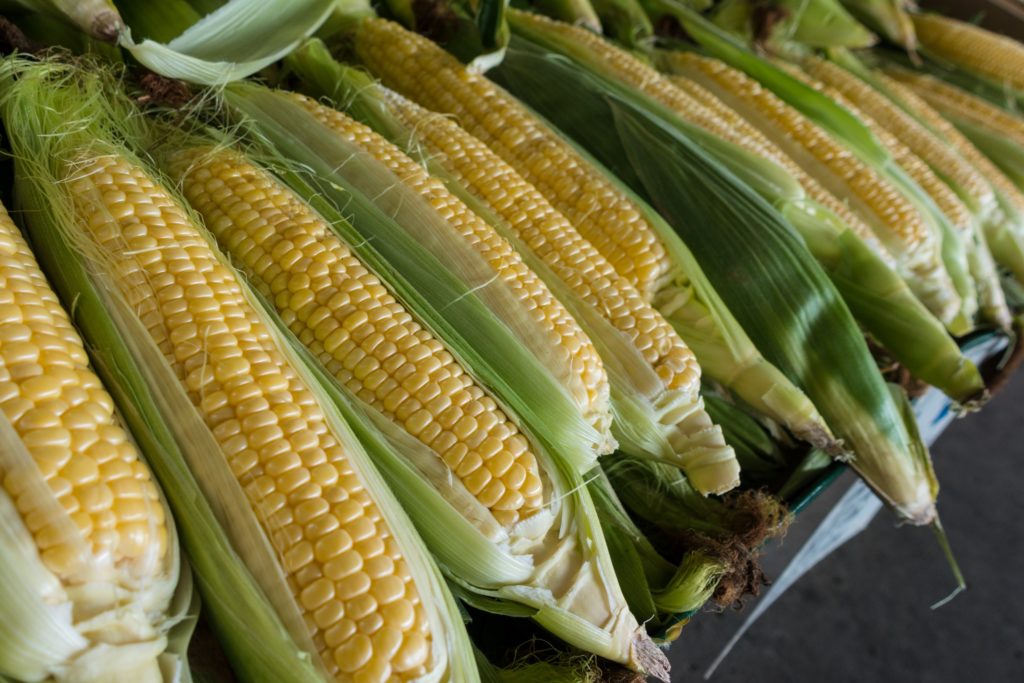
Experts determine the ripeness of corn ripening by the condition of the covering leaves and the color of the corn stigmas. The tops of ripe cobs are rounded, in unripe fruits they are pointed. To check maturity, you can bend the leaves and look at the density and color of the grains. In unripe cobs, the grains are watery, small, devoid of taste and aroma.
Depending on what the corn will be used for. It is harvested at the stage of milk, wax or biological maturity. If you are late with cleaning, the cereal will overripe and lose its taste. The grains will become tasteless and shriveled.
Storage
Young cobs of milky ripeness are suitable for food for about a week. It is necessary to choose those that can lie for a long time, without loss of taste. For this, later varieties are suitable. There are several ways to store corn. For long-term storage, it is necessary to remove leaves and fibers from heads of cabbage. Then cut off the unripe part of the cob. Remove rotten areas. You can store corn in different ways.
To dry the cobs, they are woven into braids and hung from the ceiling. When dry grains begin to fall out when shaking the cereal, then everything has dried out. The grains need to be peeled, poured into containers or fabric bags. and send it to storage.
Frozen corn is stored for a long time at sub-zero temperatures. You can put both full cobs and grains in the freezer. Fresh culture can be stored simply in the refrigerator. Cobs are stored for 14 days. Grains lie up to three weeks in vacuum containers. In canned form, the shelf life is 3 years.
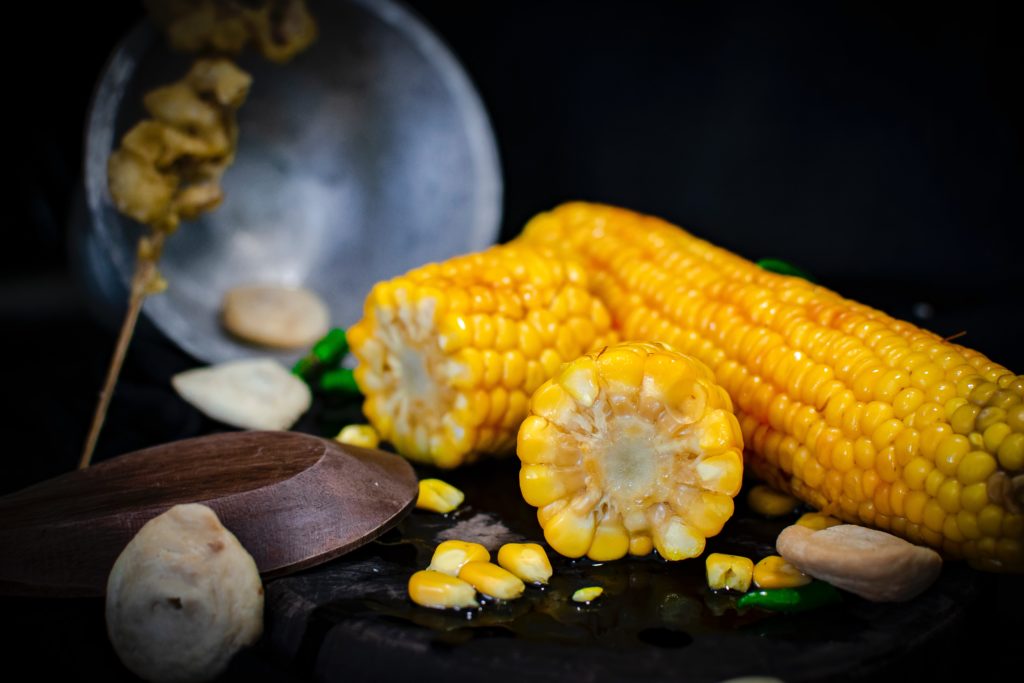
How to cook sweet popcorn.
The plant has high taste qualities and great culinary possibilities. Many dishes are prepared on its basis, including popcorn.
Making popcorn is easy. This requires a heavy-bottomed pan, 1/4 cup corn kernels, 2 tbsp. tablespoons of vegetable oil, 1 tbsp. a spoonful of granulated sugar.
The pan needs to be well heated. Pour vegetable oil into it. When everything warms up, pour grains and granulated sugar. Close the lid. After a while, the grains will begin to burst. As soon as this process is over, the pan is removed from the stove. And the contents are poured into a deep plate.
The use of popcorn and other types of fast food from corn negatively affects the body.People who are prone to obesity, metabolic disorders and allergies should give up popcorn.
plant benefits
Corn can be used in soups, salads and side dishes. Porridge is boiled from it, and cakes are baked. The benefits of cereal are high, it is a source of a complex of useful elements. The composition of the plant includes substances such as phosphorus, magnesium, copper, potassium and nickel. In corn cobs, ascorbic acid, stigmasterol, saponins and pantothenic acid are found.
Corn oil contains substances that regulate metabolic processes in the human body, normalize cholesterol, and increase immunity.
Variety overview
Early
Gourmand
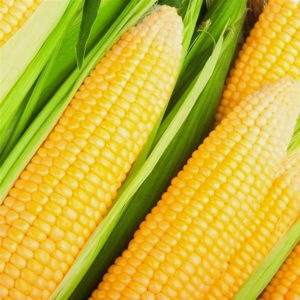
Variety Lakomka - early ripe. The fruit weighs from 180–250 g. The grains are large, even, not hard. The taste is delicate and sweet. Germination is good. Cooks quickly. The color is yellowish-orange, the peel is thin and tender. The application is universal. Used fresh and cooked. Suitable for growing in small areas.
- productivity;
- sugar content;
- early ripening;
- excellent taste;
- long-term storage.
- suffers from rust, spotting.
Hotel
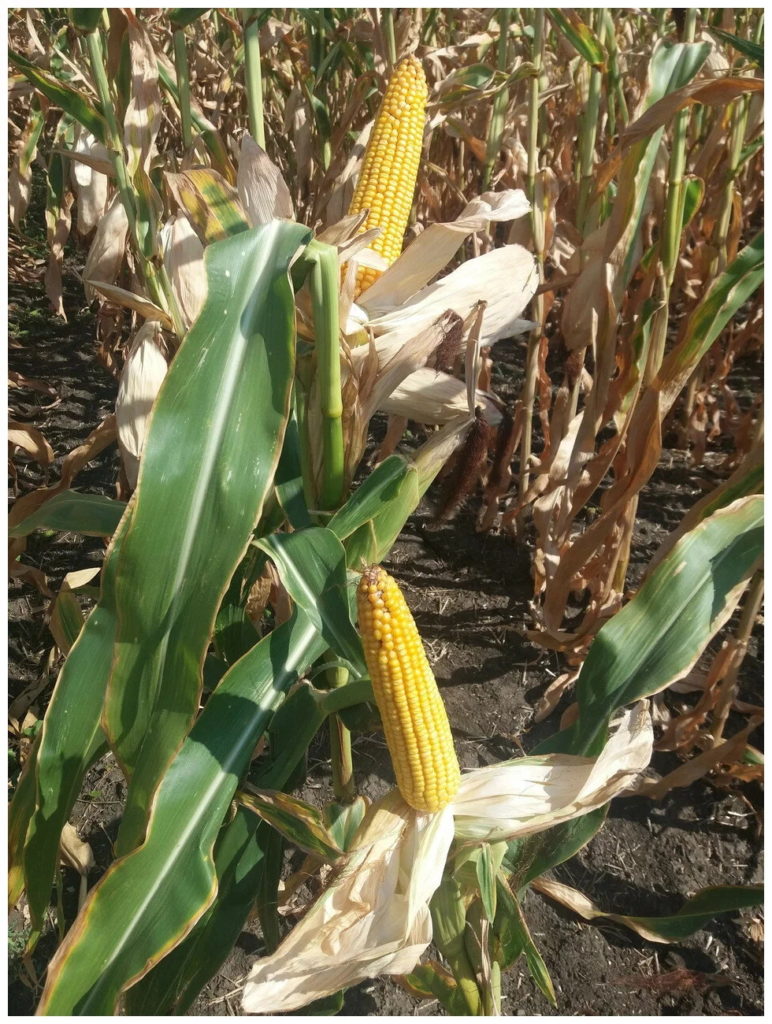
You can get a crop of this species 80 days after germination. The plant is tall, up to 2 m, the length of the ears is 21 cm. The grains are yellow. Has good taste. Harvested in late August, early September. It tolerates drought well and is resistant to lodging.
- tall;
- productivity;
- excellent taste;
- has good keeping quality;
- not susceptible to disease.
- intolerant of shade.
Dobrynya
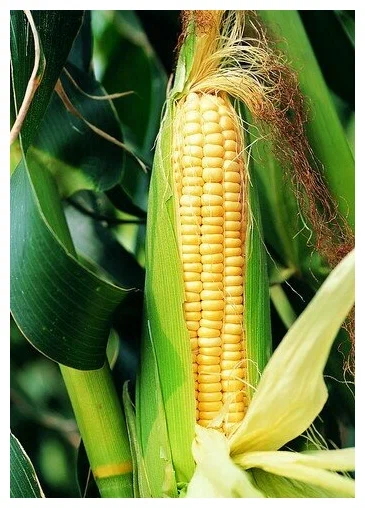
An early variety of corn has large and long cobs, very juicy and sweet taste. The variety was developed by Canadian breeders. Grows well in any soil.Has one or two cobs per plant. Not afraid of diseases: mosaics, rust, wilt. You can harvest after 70 days. When the cobs turn yellow and dry a little. The use is universal. Used for cooking and canning.
- disease resistant;
- sweet;
- unpretentious;
- friendly maturation.
- demanding on lighting.
Mid-season varieties
Megaton

Megaton has good protection against diseases. The culture ripens in 80-85 days. Plant height can reach 2.5 meters. The plant is powerful. 2-3 ears are formed on the stem. The grains are bright yellow. Culture is characterized by long-term storage. It does not lodge, as it has a very thick stem.
- not subject to disease;
- sweet taste;
- does not lie down;
- high plasticity;
- good keeping quality;
- drought resistant.
- matures longer in cool areas.
Valmond
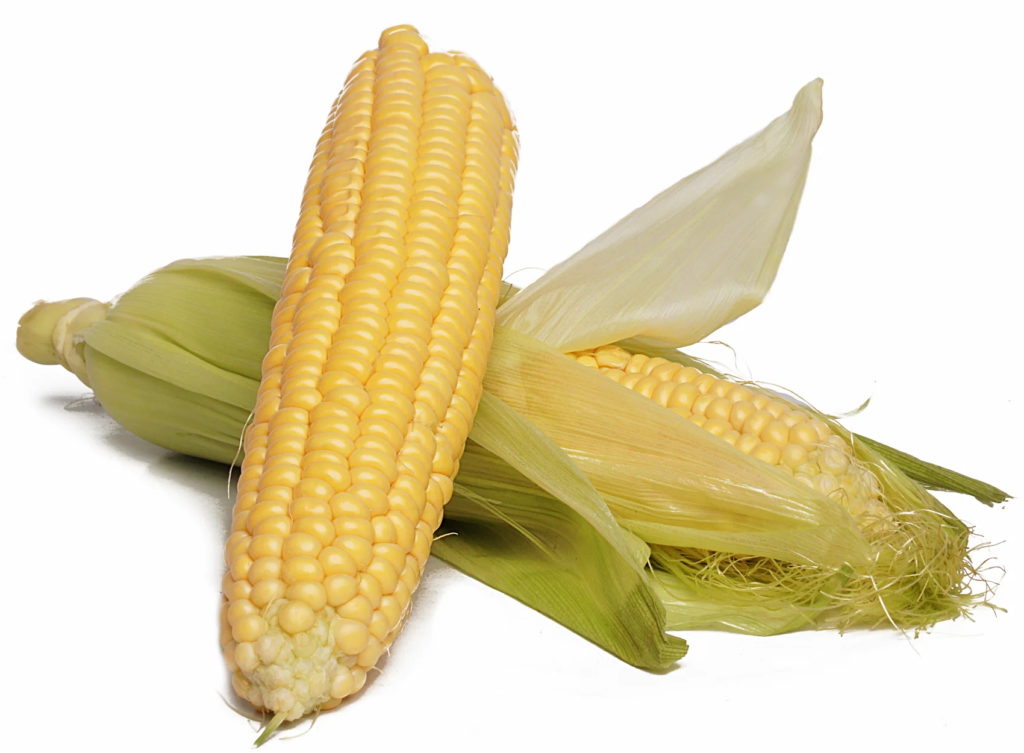
Bred by specialists from Spain. The variety is mid-season, has excellent taste. The plant grows 2.2 m, forms two cobs on a trunk with a length of 27 cm and a diameter of 5.5 cm. The plant is strong, does not lie down in strong winds. Excellent disease resistance. Large grains of yellow color have increased sweetness.
- sugar content;
- not susceptible to disease;
- drought resistance;
- excellent taste qualities.
- stored for 2 weeks;
- not suitable for processing.
golden batam
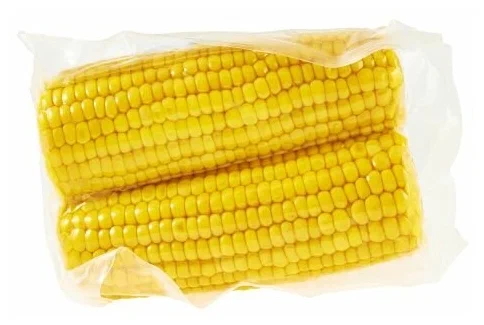
The mid-season type of corn has a high yield. Rise together. Grains are yellow. Excellent taste, sweet, melts in your mouth. It grows up to 170 cm. The ripening period is 2.5 months. Cobs 20 cm long, weigh 200 g.4-7 cobs are formed on the stem. Universal.
- high yield;
- unpretentiousness;
- excellent taste qualities.
- requires regular watering;
ice nectar
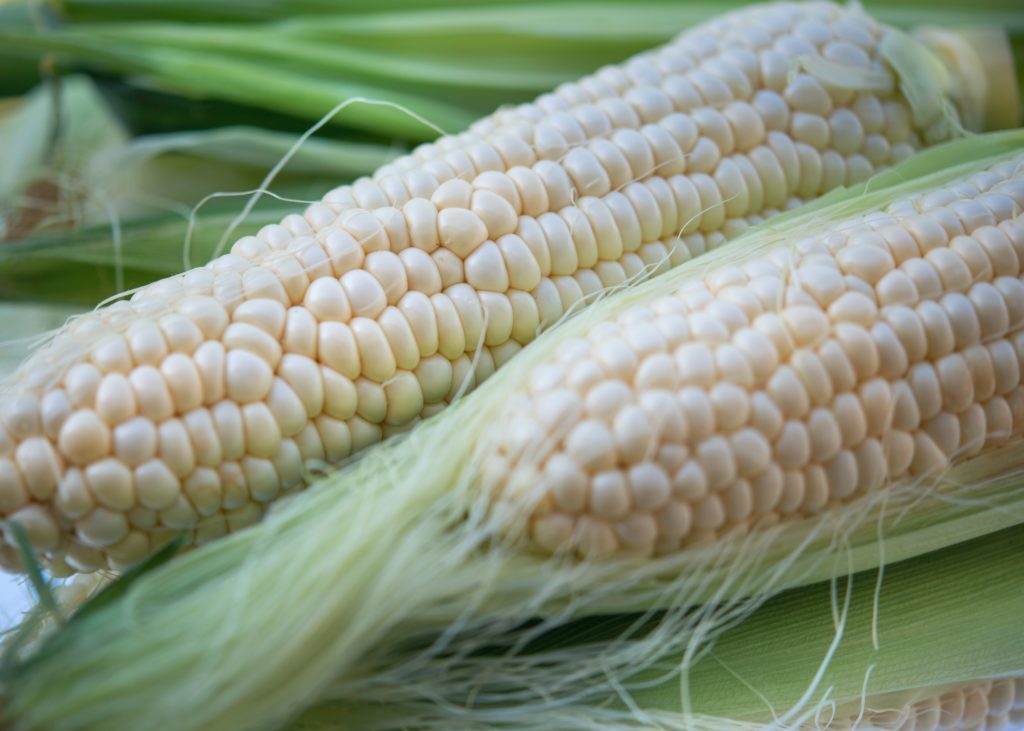
One of the most delicious and productive species, although it has a medium late ripening period. The length of the culture is 180 cm. Cobs 25 cm long are formed on the plant. The grains are ivory in color. Soft and sweet in taste. Great for freezing and canning. It is used for boiling and fresh consumption.
- well kept;
- universal use;
- excellent taste.
- suitable for southern areas.
Raquel
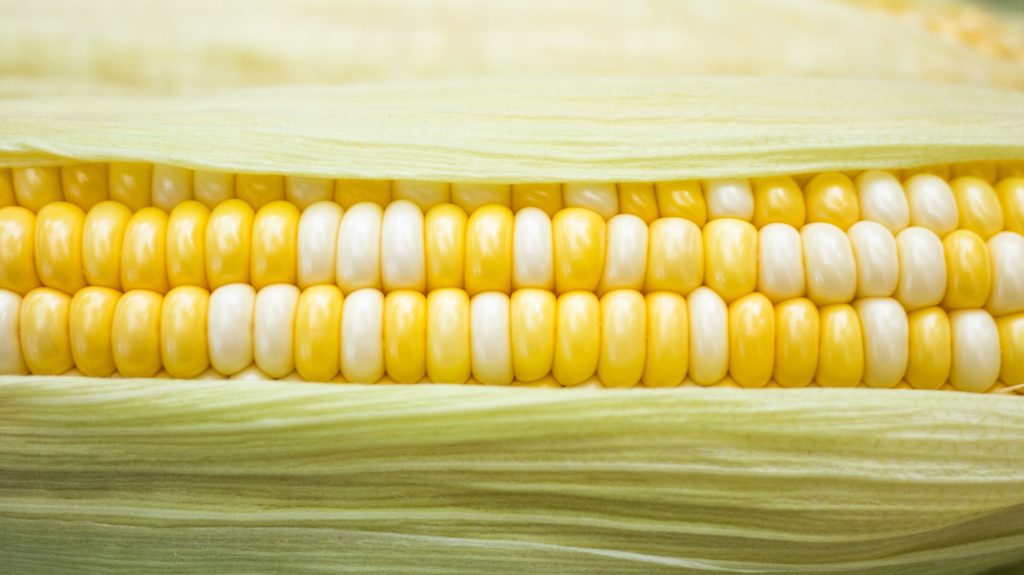
Bicolor corn variety. The peculiarity of the plant is the alternation of yellow grains and white. Developed by specialists from France. The height of the plant is 150 cm. The cobs are 22 cm long and weigh 400 g. The taste is very sweet when boiled.
- high yield;
- disease resistance;
- very sweet;
- unusual appearance.
- not suitable for long term storage.
Melina
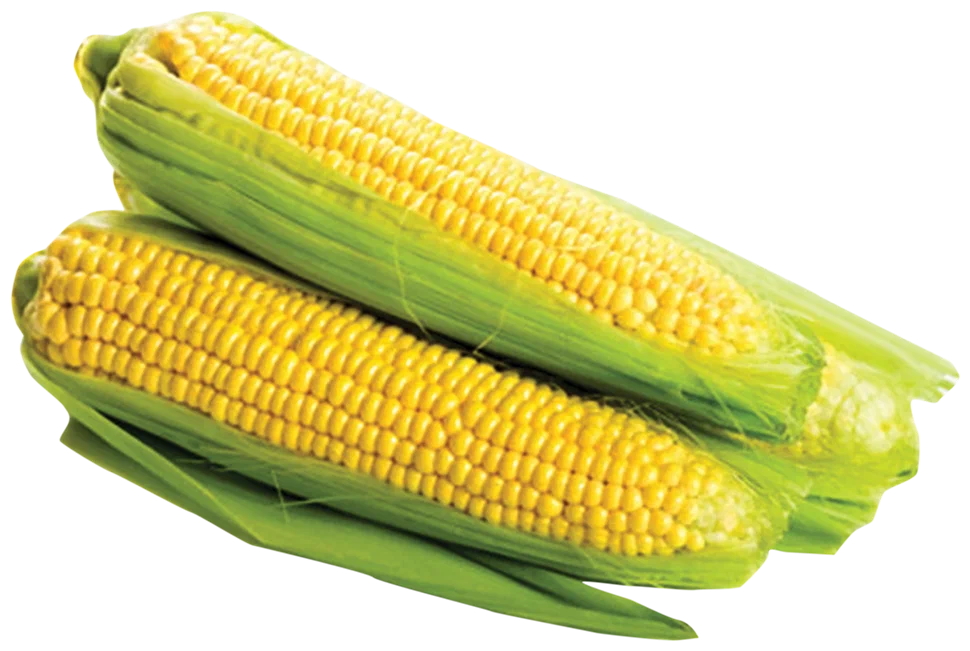
A new type of corn from Spain. The plant is powerful with a height of up to 2 m. 2 cobs 26 cm long and weighing 800 g are formed on the stem. The grains are dark yellow in color, their surface is glossy. The taste is delicate and sweet. Suitable for processing and fresh consumption.
- resistance to drought and other adverse conditions;
- high yield;
- disease resistance.
- stored for 2 weeks.
Popular varieties for popcorn
White cloud
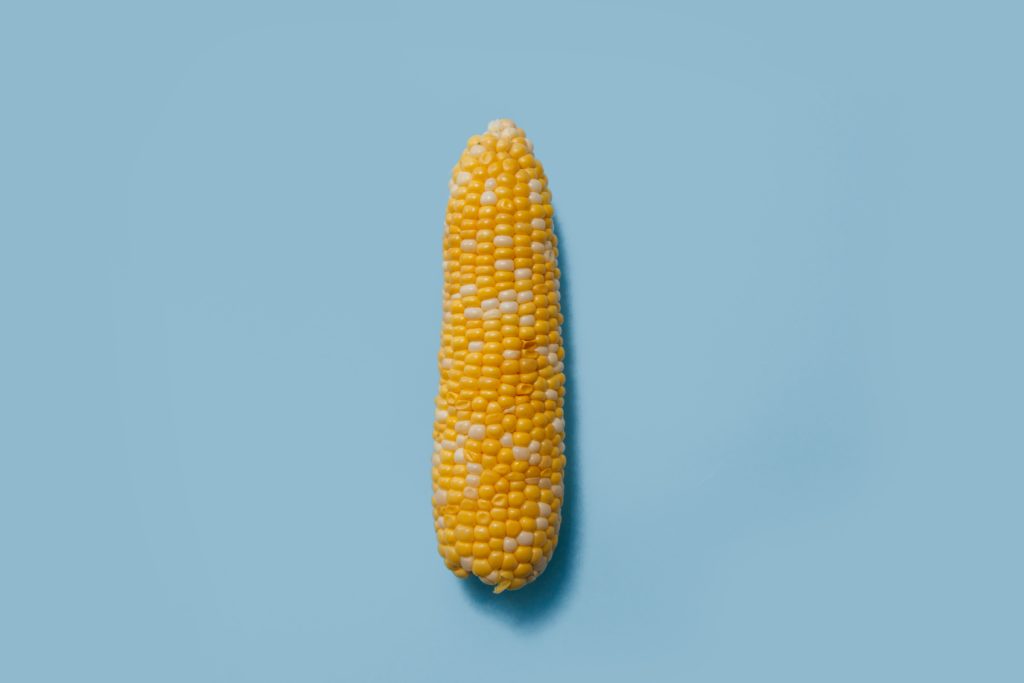
The variety has an unusual color with yellow and white grains. The length of the plant is 22 cm, the cobs weigh 160 g.Plant of universal use. This variety makes delicious popcorn.
- universality;
- high taste qualities;
- mid-season;
- excellent trade dress.
- grows only through seedlings.
Pop-pop
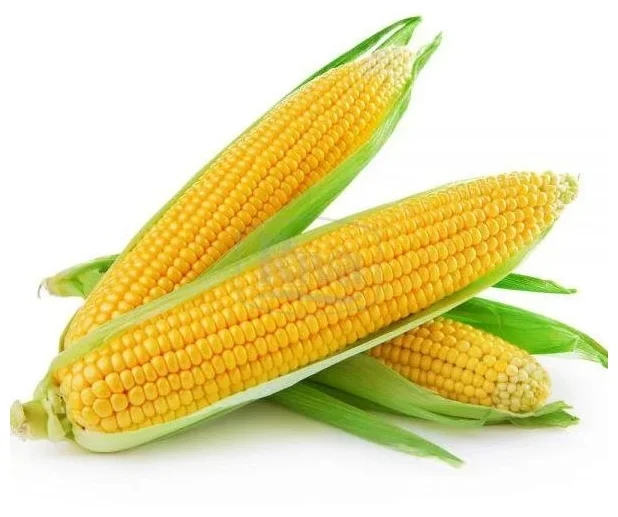
Pop-Pop is a popular variety among gardeners. Plant height - 150 cm. The color of the grains is light golden. The taste is excellent. Cobs have a length of 18 cm. It ripens early, germination is friendly. It takes 80-90 days from germination to technical maturity.
- high yield;
- marketable condition;
- small height;
- unpretentiousness.
- growing through seedlings;
- resistant to diseases and pests.
Diseases and pests
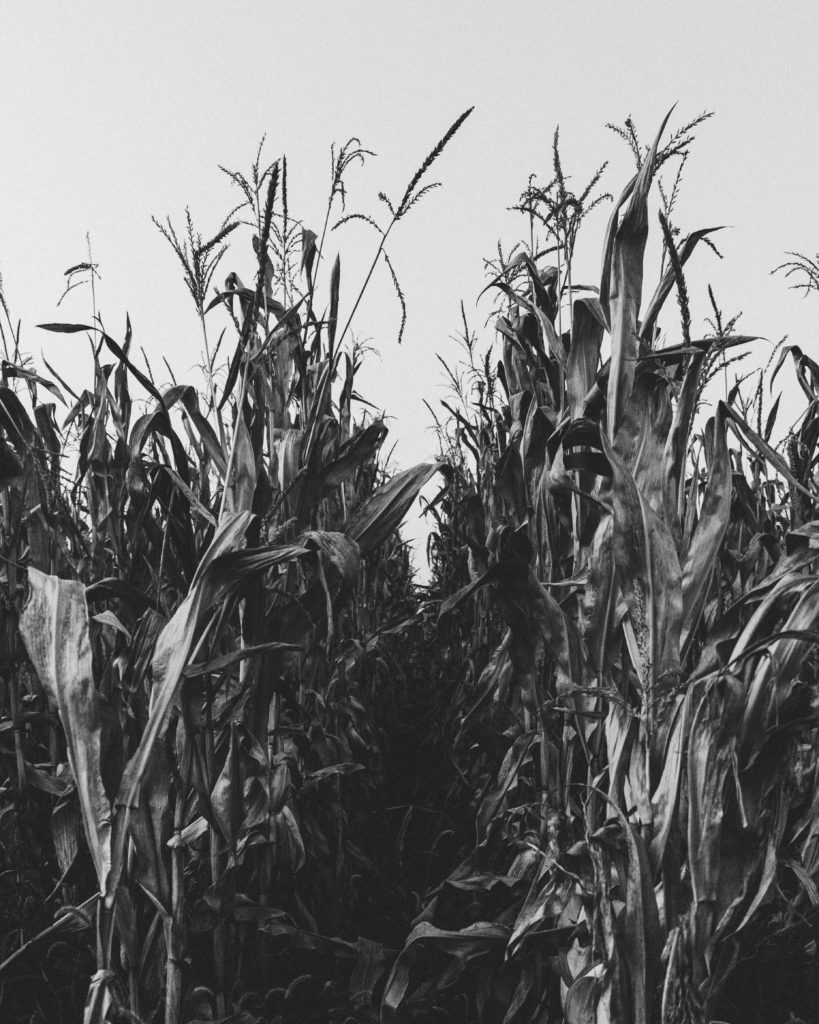
Dangerous diseases of corn include fusarium, diplodia, blister smut and others. If you do not take action, the entire crop may be lost. The cause of diseases can be poor planting material, poor quality care and pests. To prevent this from happening, you need to carefully monitor the growth of the plant. At the first signs of a disease or in the presence of pests, start an active fight.
- Bubble smut
The cause of the disease is a fungus. It covers the part of the corn that is above the ground. Green blisters appear at the sites of injury. They gradually turn black. They contain malicious spores. The plant loses strength and weakens. If no action is taken, it will die.
Prevention of the disease will be tillage, preparation of healthy seeds and fertilizer with potassium and phosphorus.
- Fusarium
A fungal disease affects cereal at any stage. The mold fungus develops in the remains of corn. The seeds will rot if the spores are in the ground.Corn grown from such seeds is weak and does not grow well.
To avoid fusarium, it is necessary to sow on time. The earth must be fertilized and warm. It is advisable to spray it with a fungicide before sowing.
- Diplodia
The disease manifests itself when the stem of the plant begins to rot. The fungus destroys the corn, causing the leaves to stick together. The cause of the disease is considered to be seeds infected with a fungus. To prevent this from happening, it is better to treat the grains and the ground with a fungicide.
Pests also cause significant damage to the crop. They can destroy the root system or the ground part. The plant is damaged by wireworms, aphids, cotton bollworms and corn borers.
For pest control, there are folk and chemical means. The following steps are taken to prevent the occurrence of infection:
- choose early-ripening grains;
- disinfect them before sowing;
- treat the soil with fungicides and fertilize it;
- remove weeds in a timely manner;
- do not sow the crop on infected soil;
- use high-quality herbicides "Lumaks", "Gardo Gold" and "Elumis";
- study information about pests and symptoms of corn diseases.
new entries
Categories
Useful
Popular Articles
-

Top ranking of the best and cheapest scooters up to 50cc in 2022
Views: 131649 -

Rating of the best soundproofing materials for an apartment in 2022
Views: 127687 -

Rating of cheap analogues of expensive medicines for flu and colds for 2022
Views: 124516 -

The best men's sneakers in 2022
Views: 124030 -

The Best Complex Vitamins in 2022
Views: 121937 -

Top ranking of the best smartwatches 2022 - price-quality ratio
Views: 114978 -

The best paint for gray hair - top rating 2022
Views: 113393 -

Ranking of the best wood paints for interior work in 2022
Views: 110317 -

Rating of the best spinning reels in 2022
Views: 105326 -

Ranking of the best sex dolls for men for 2022
Views: 104362 -

Ranking of the best action cameras from China in 2022
Views: 102214 -

The most effective calcium preparations for adults and children in 2022
Views: 102010

